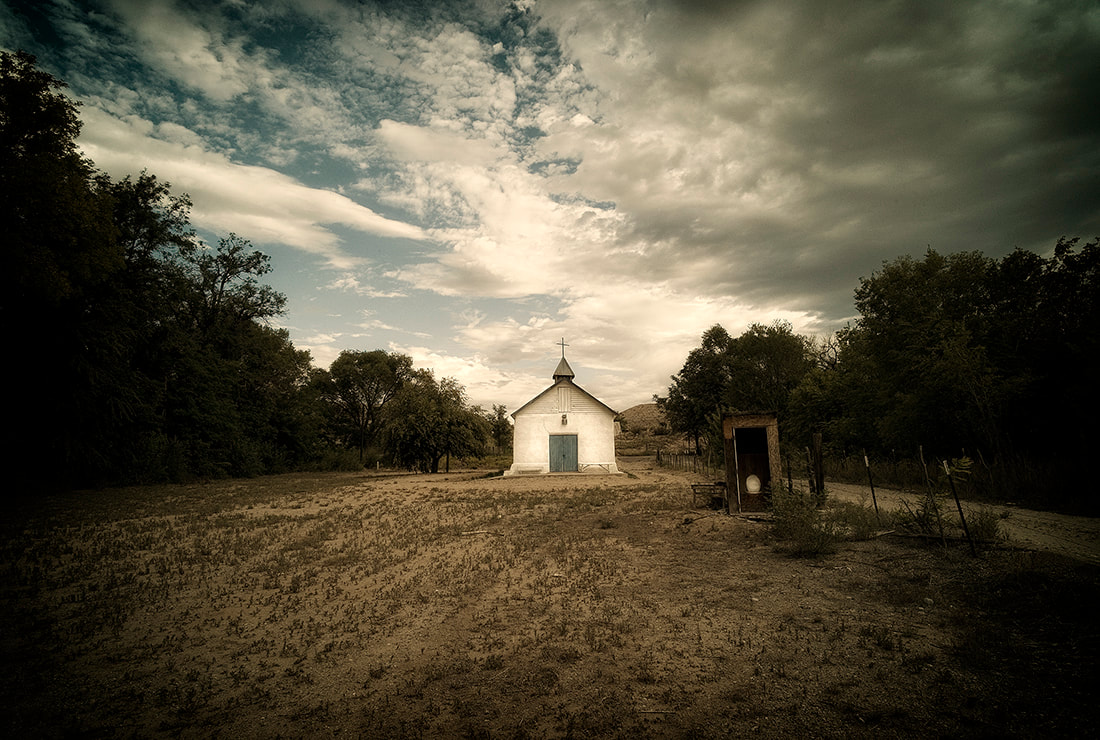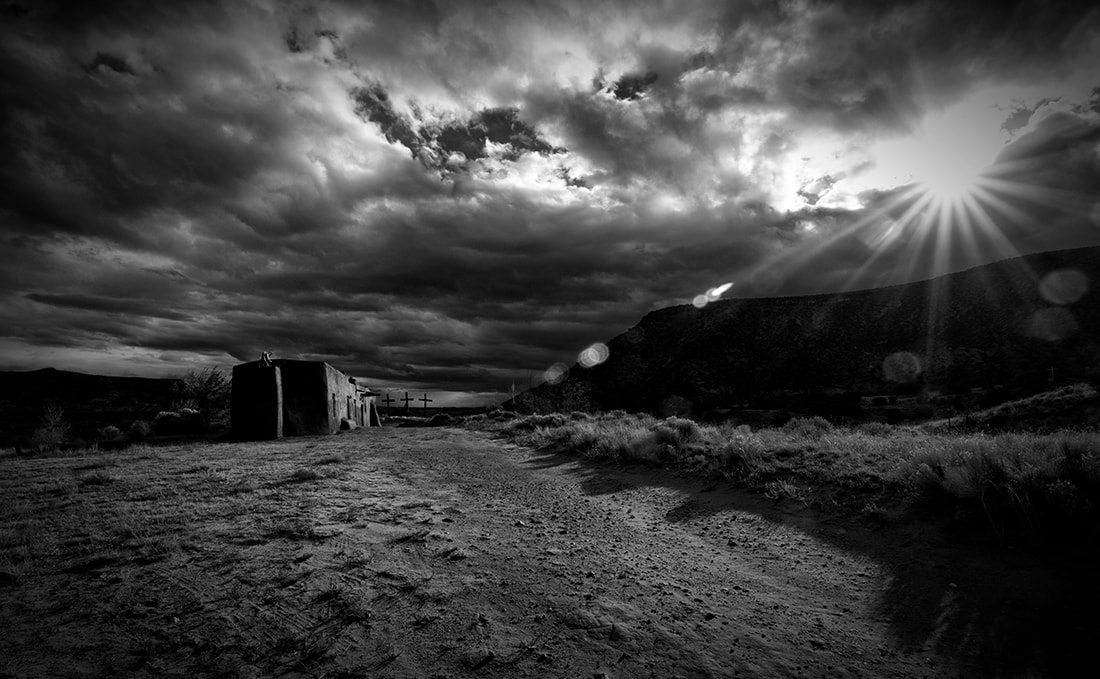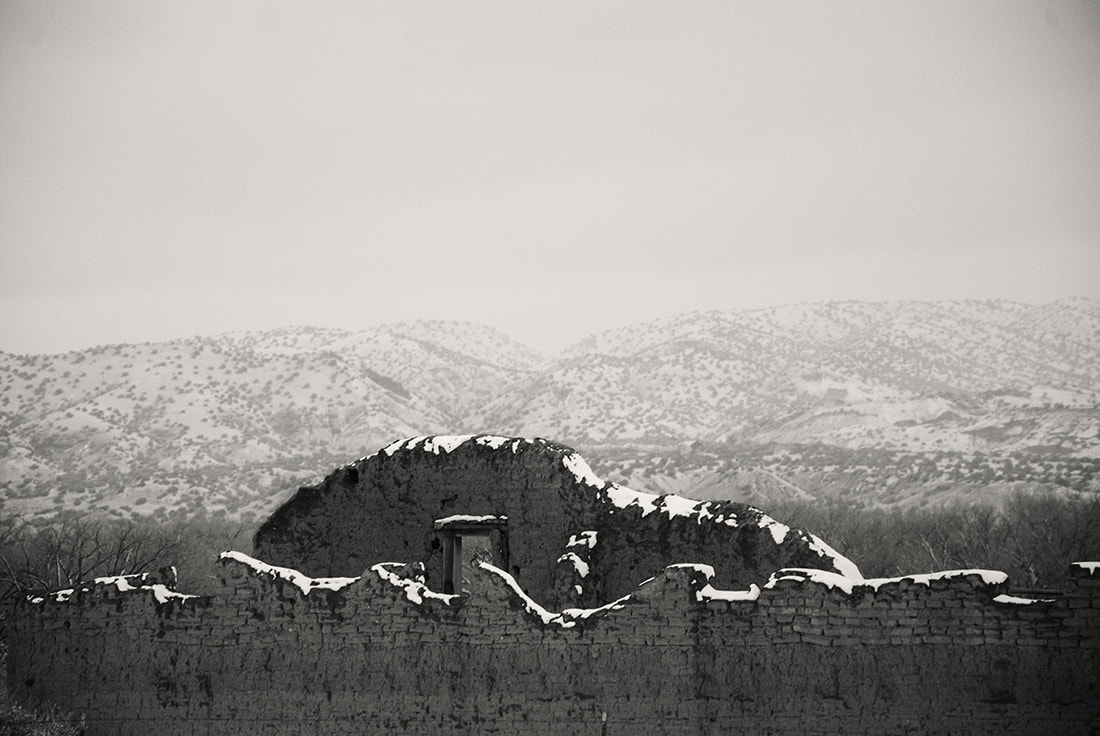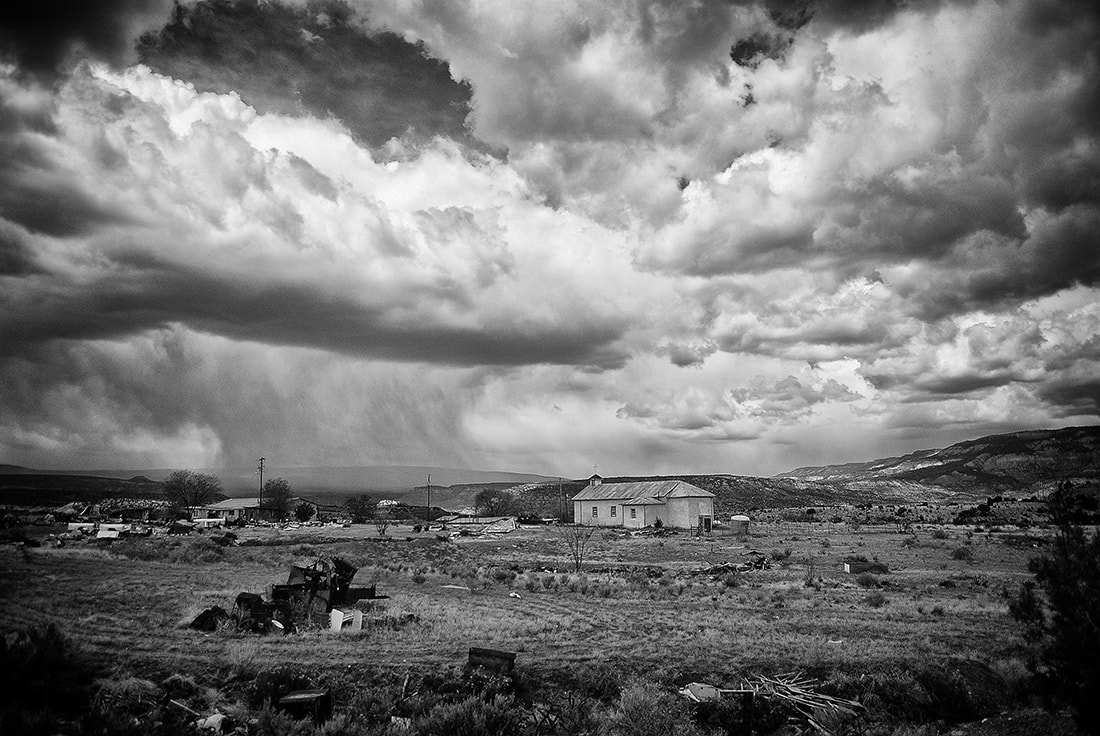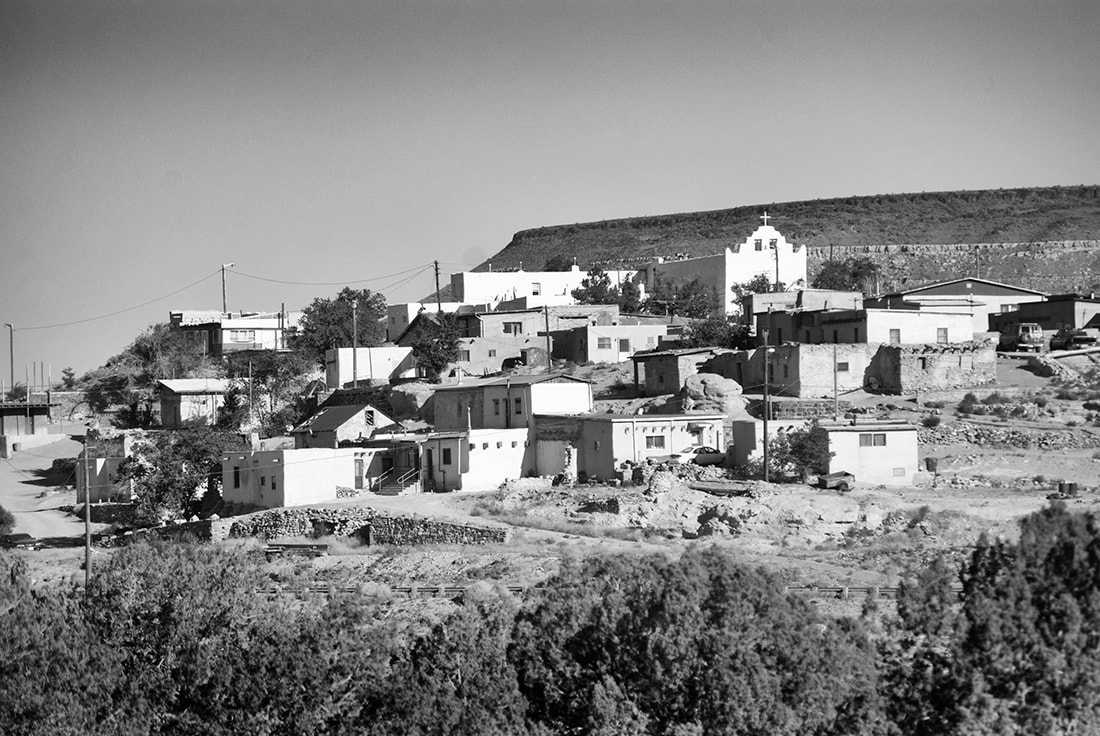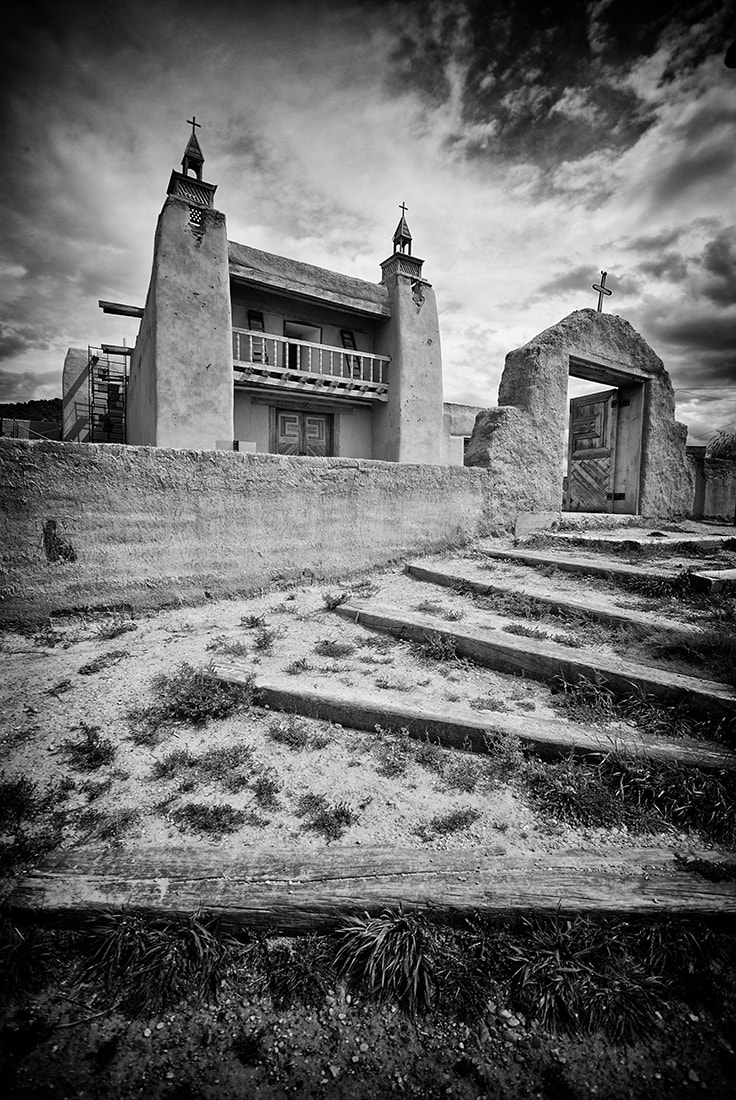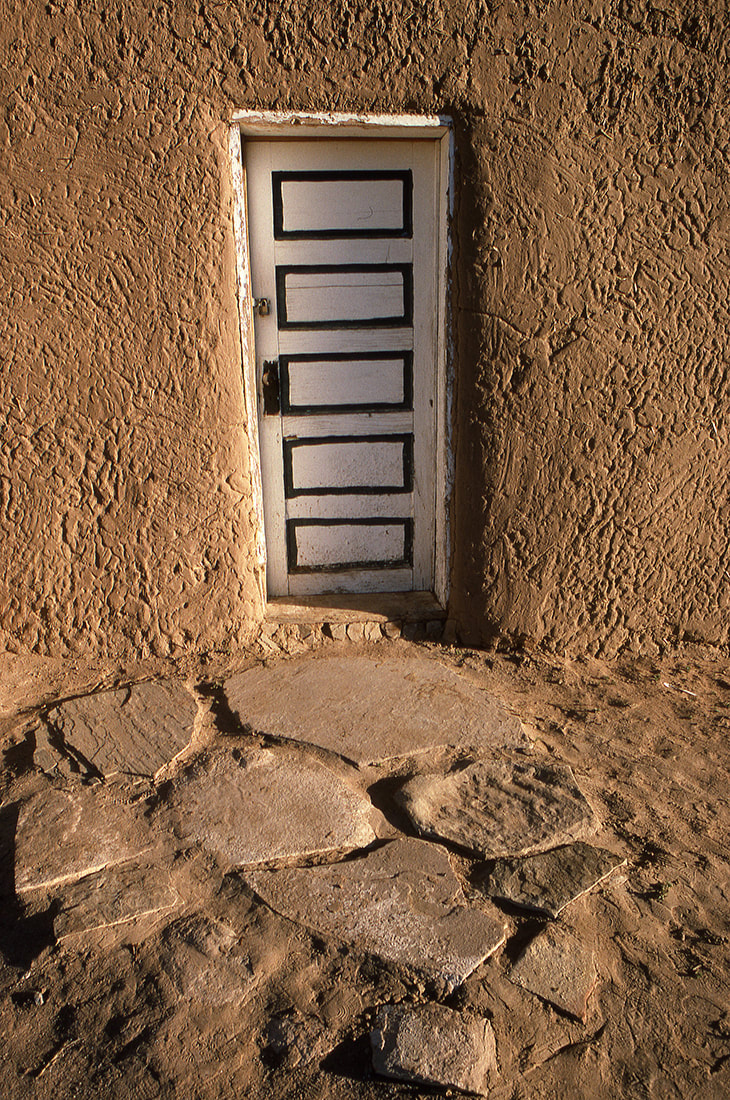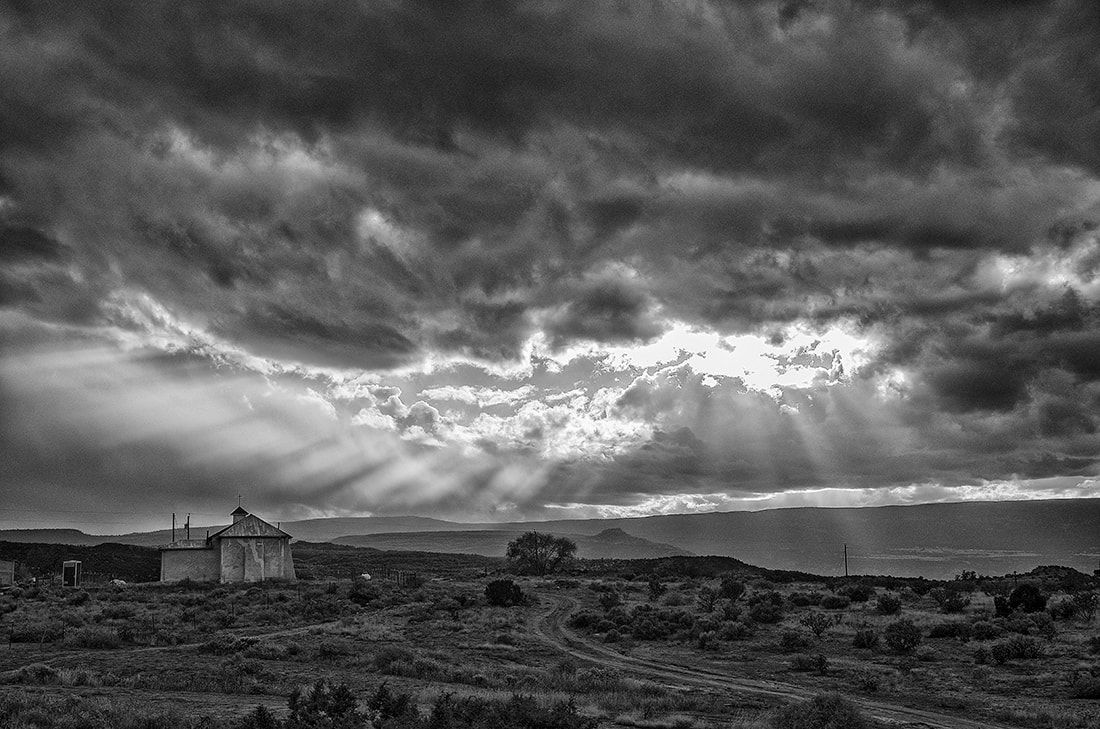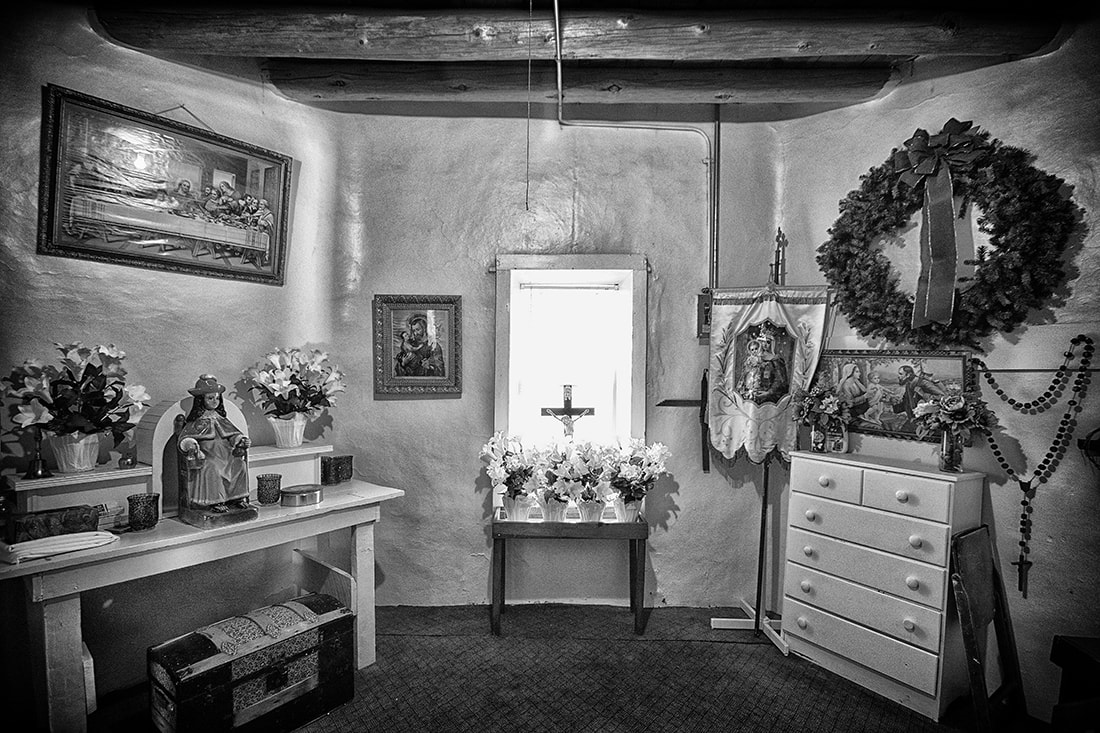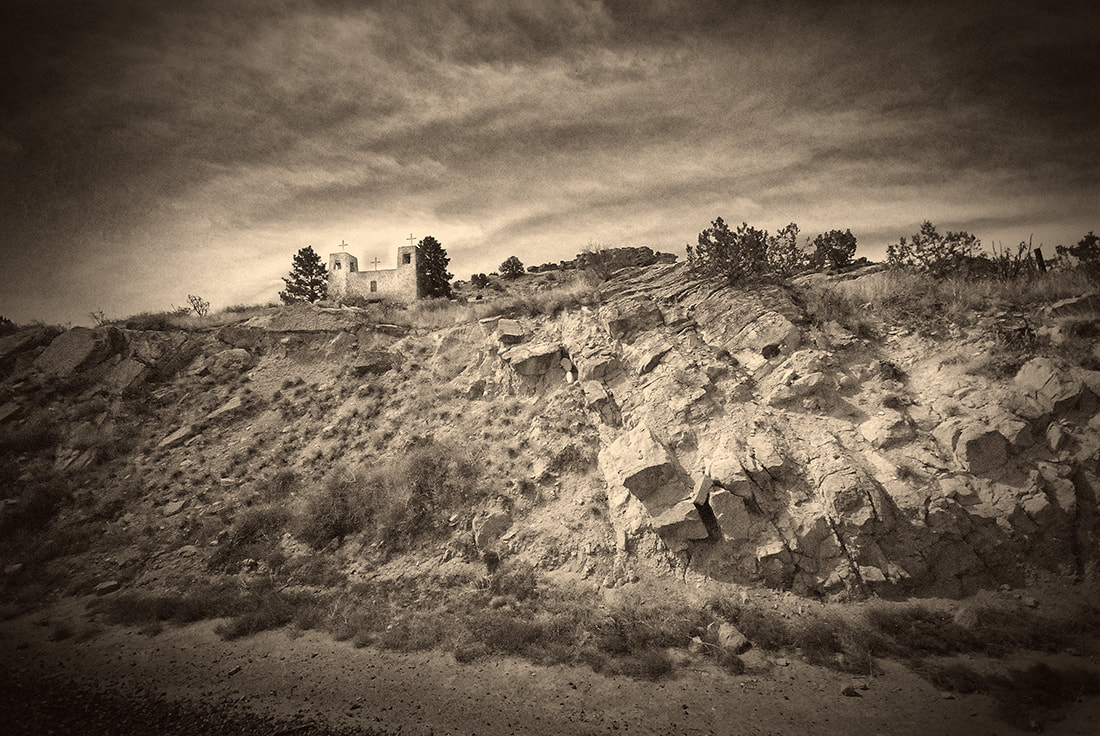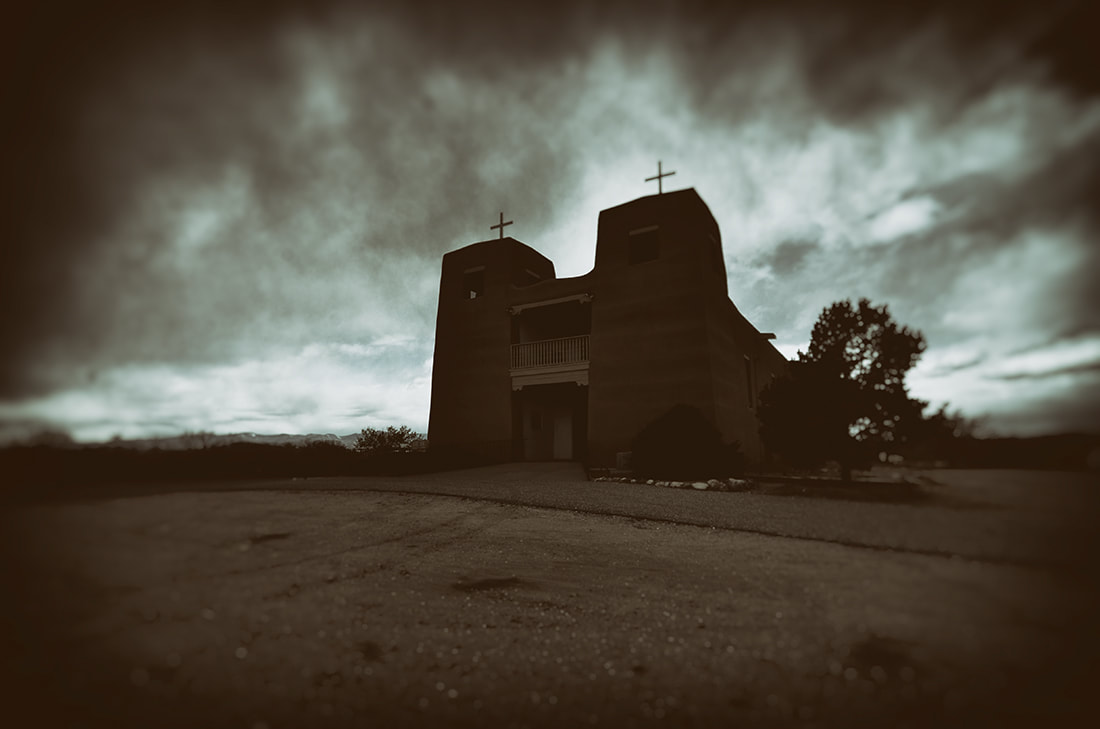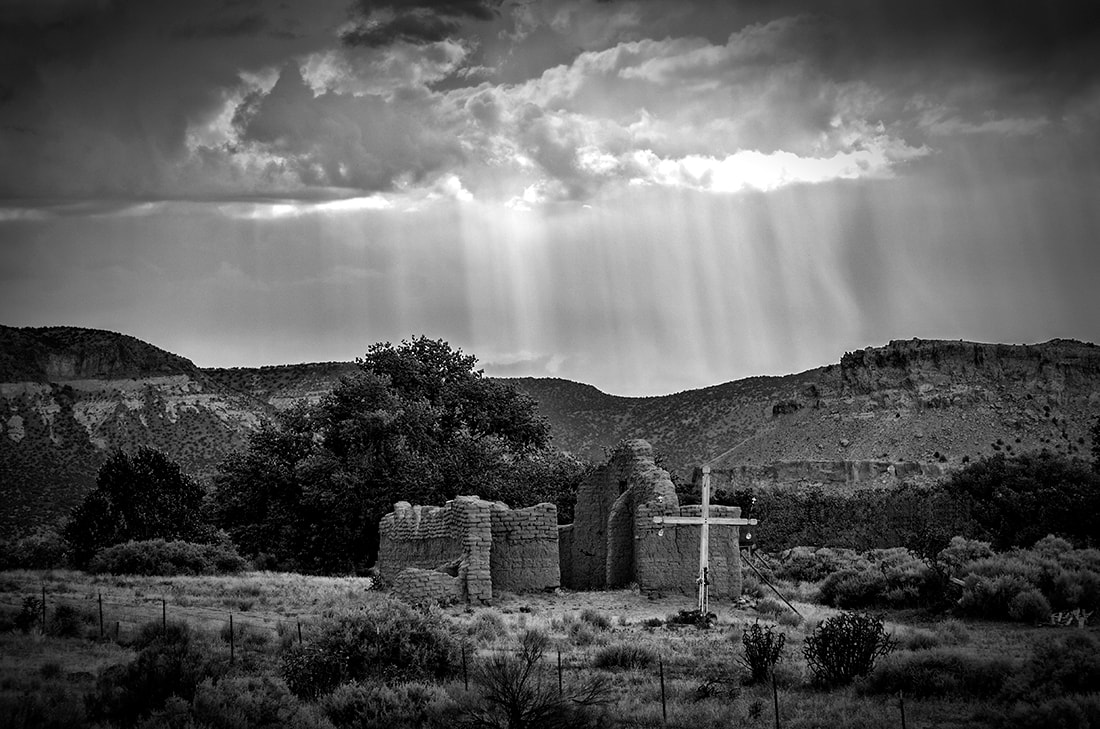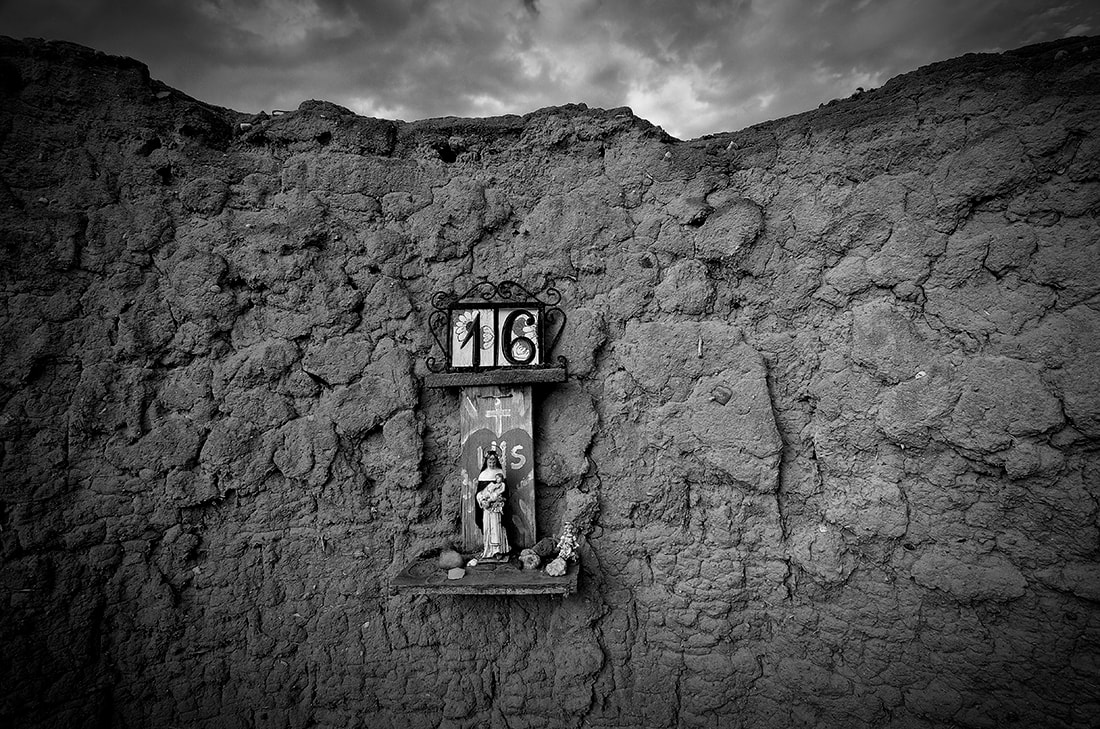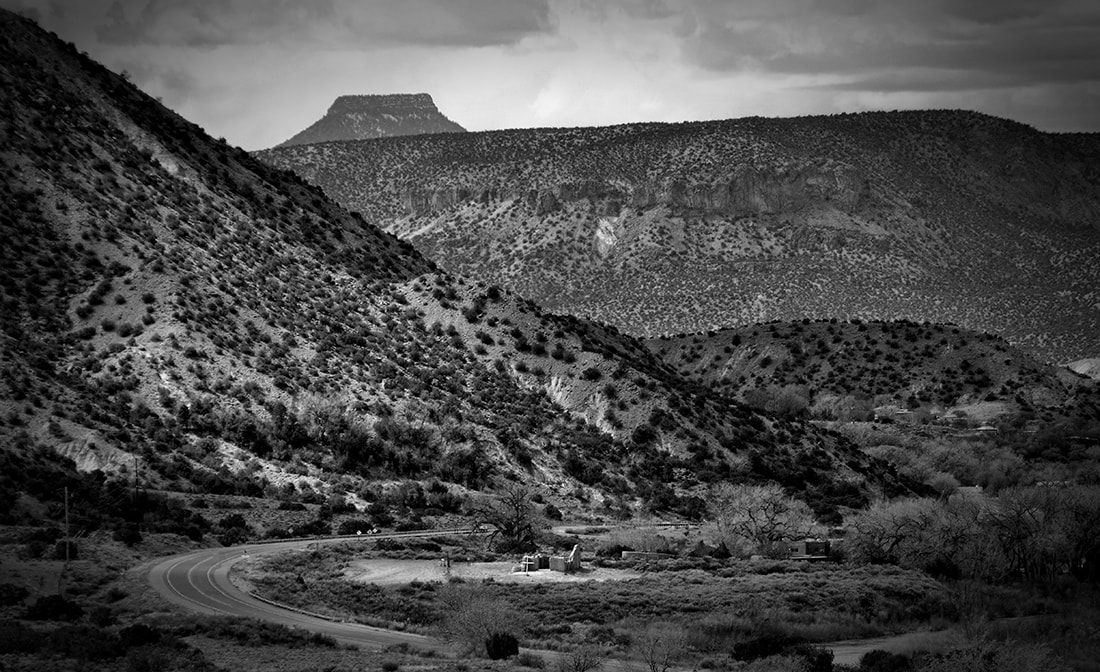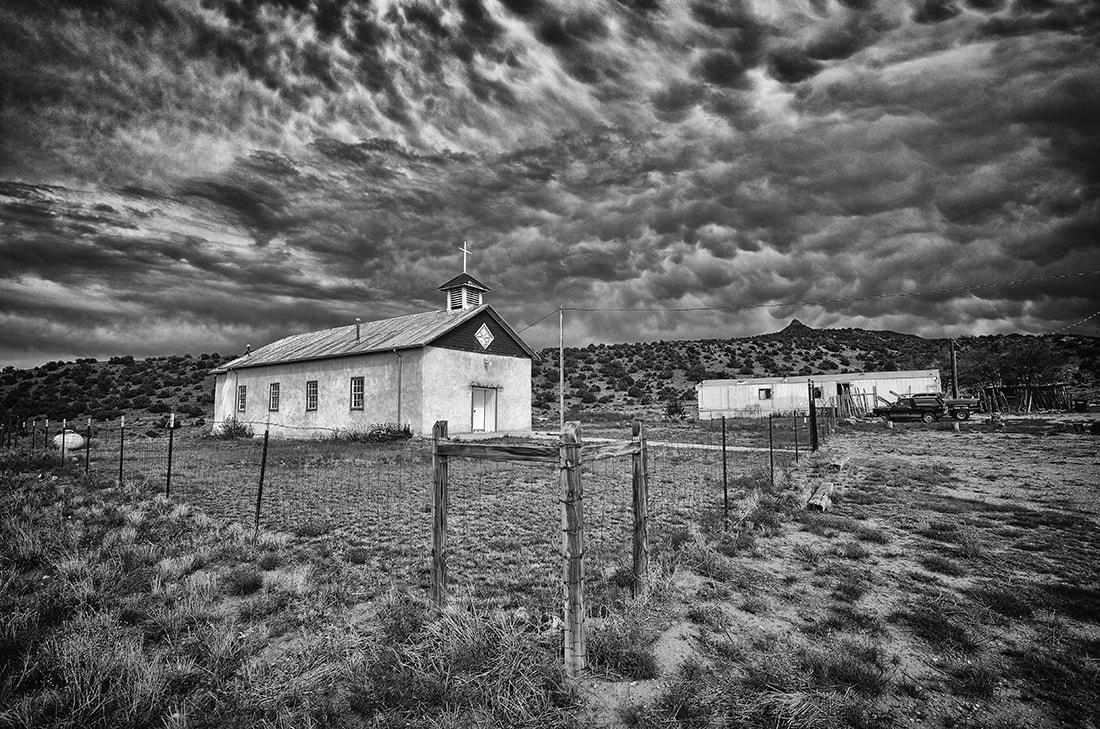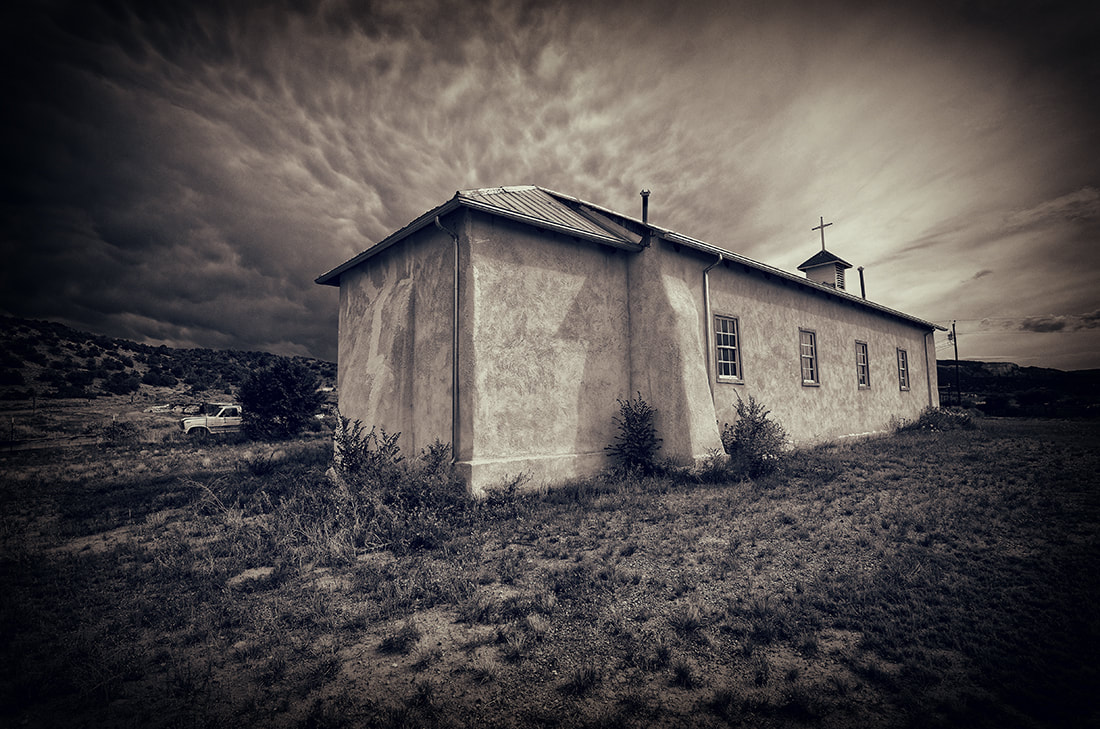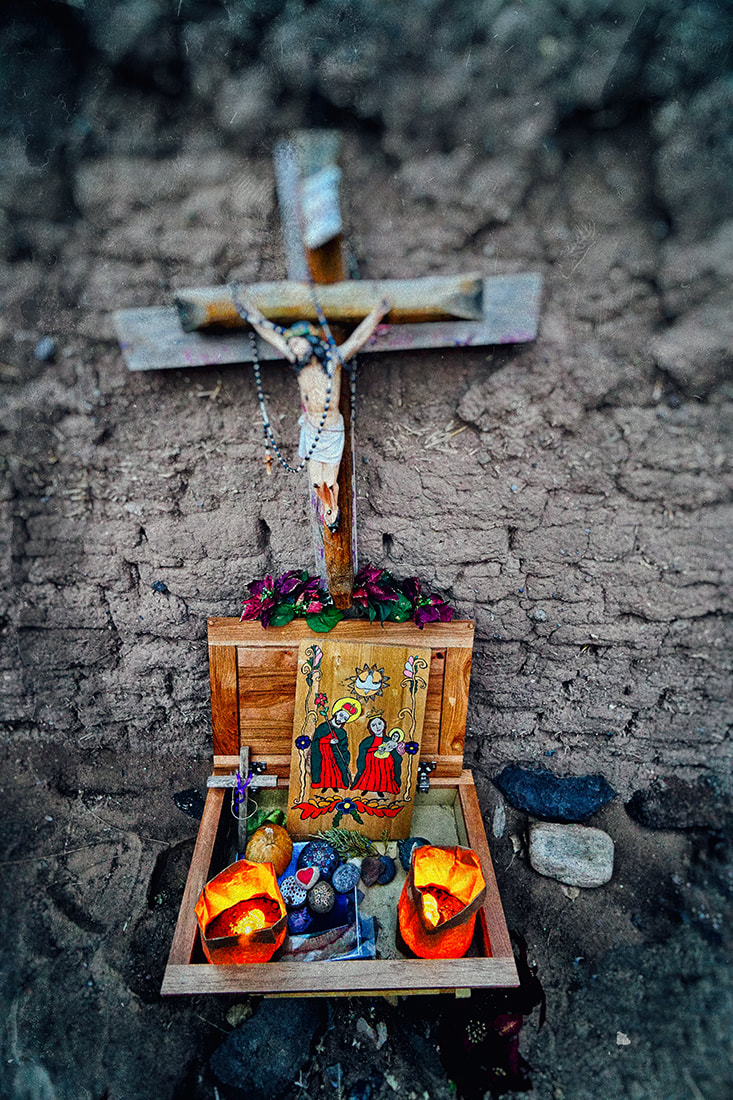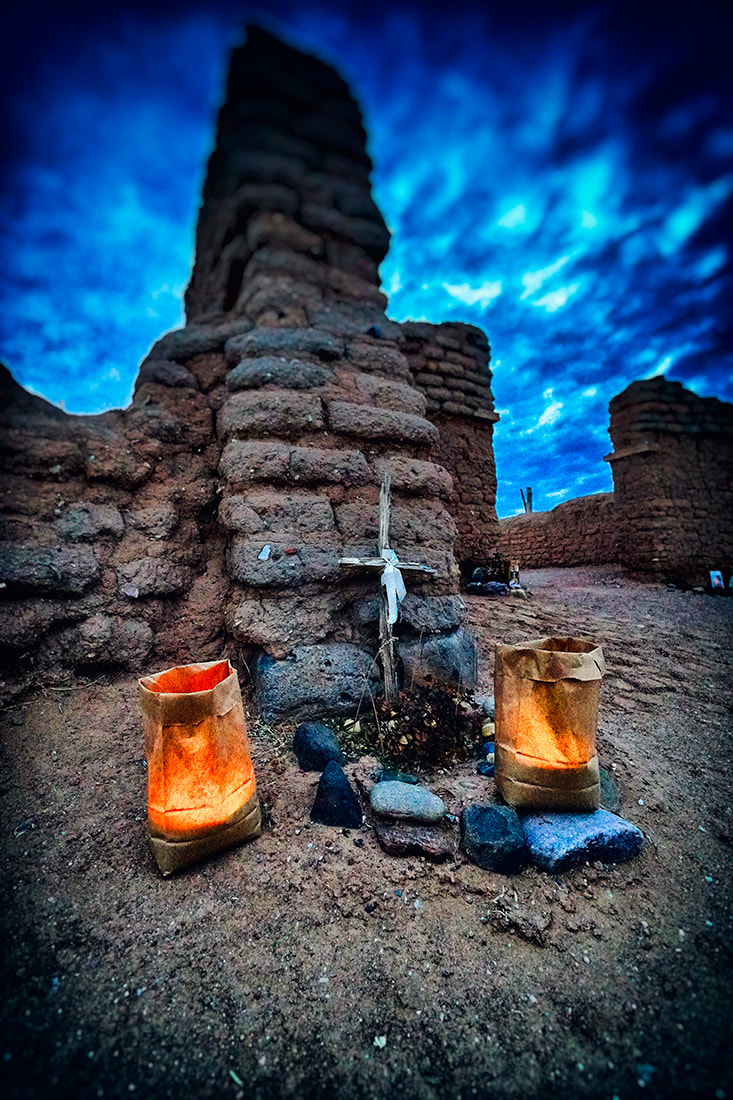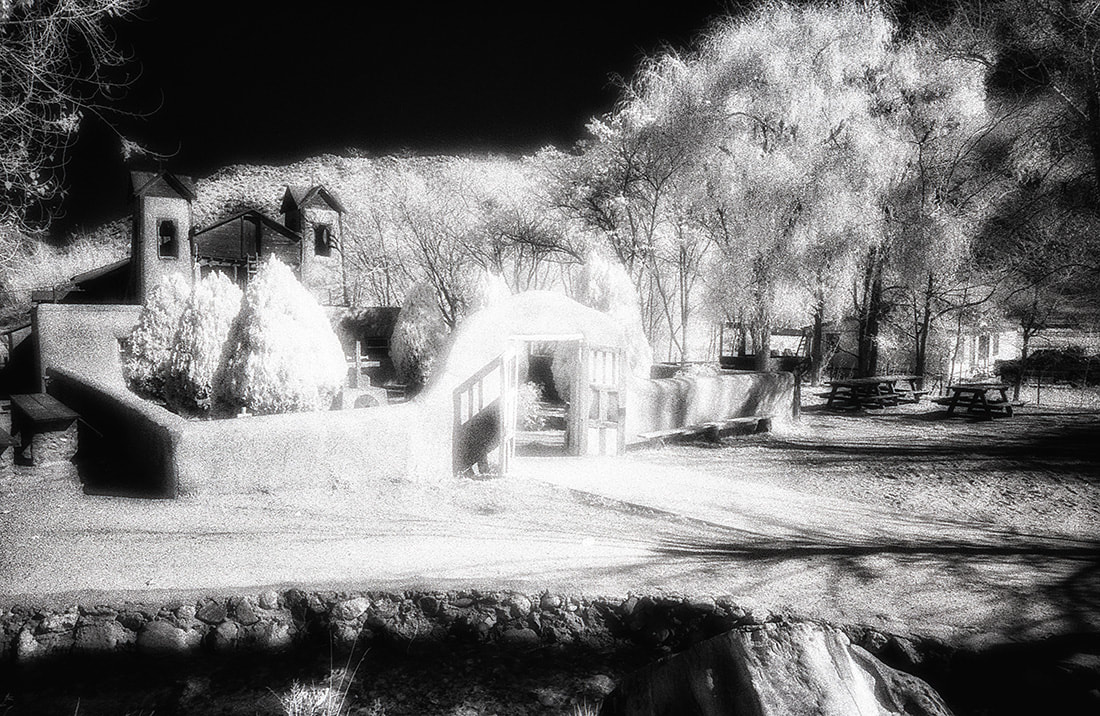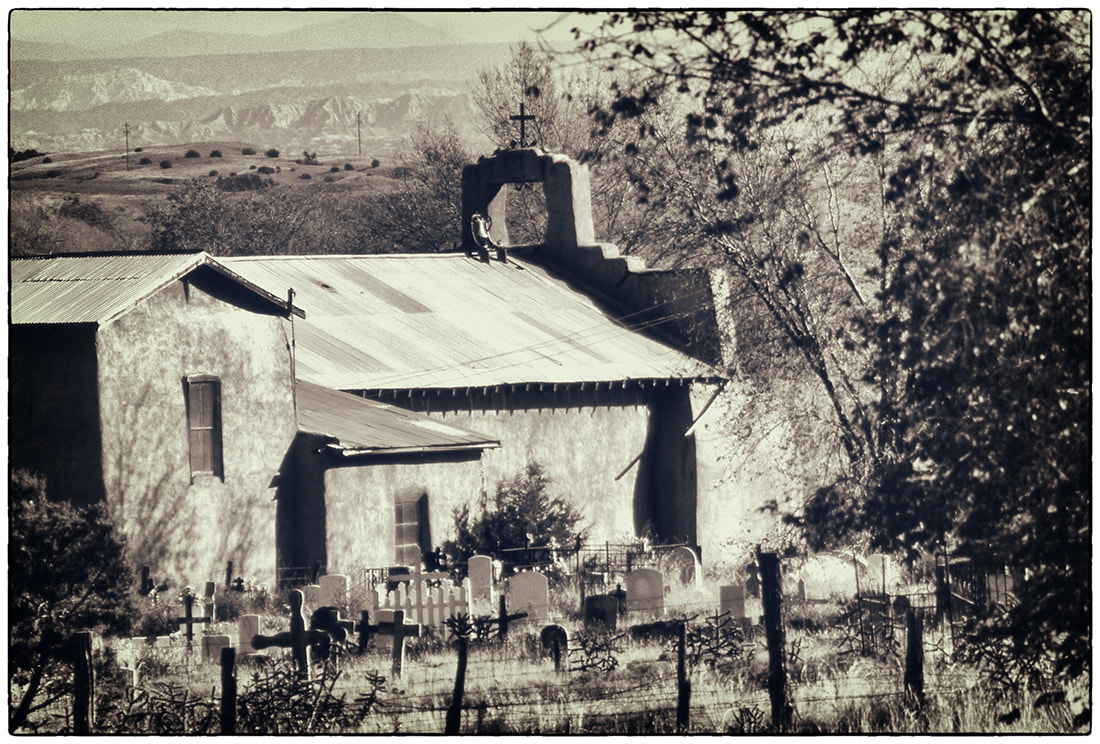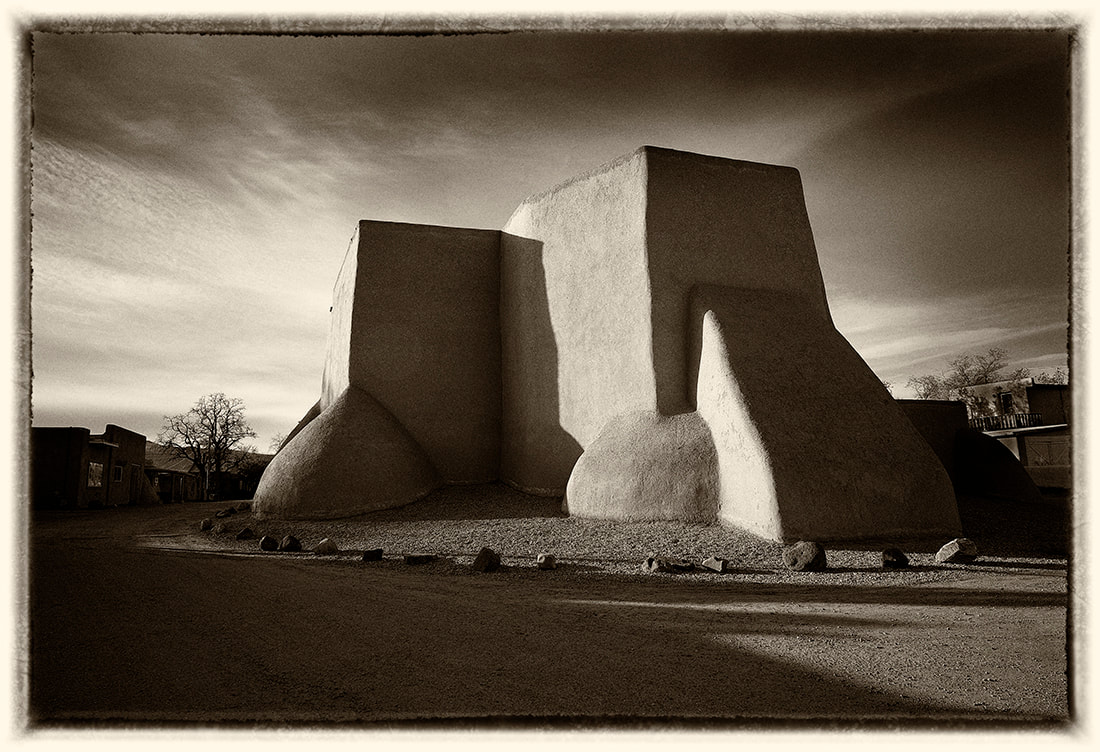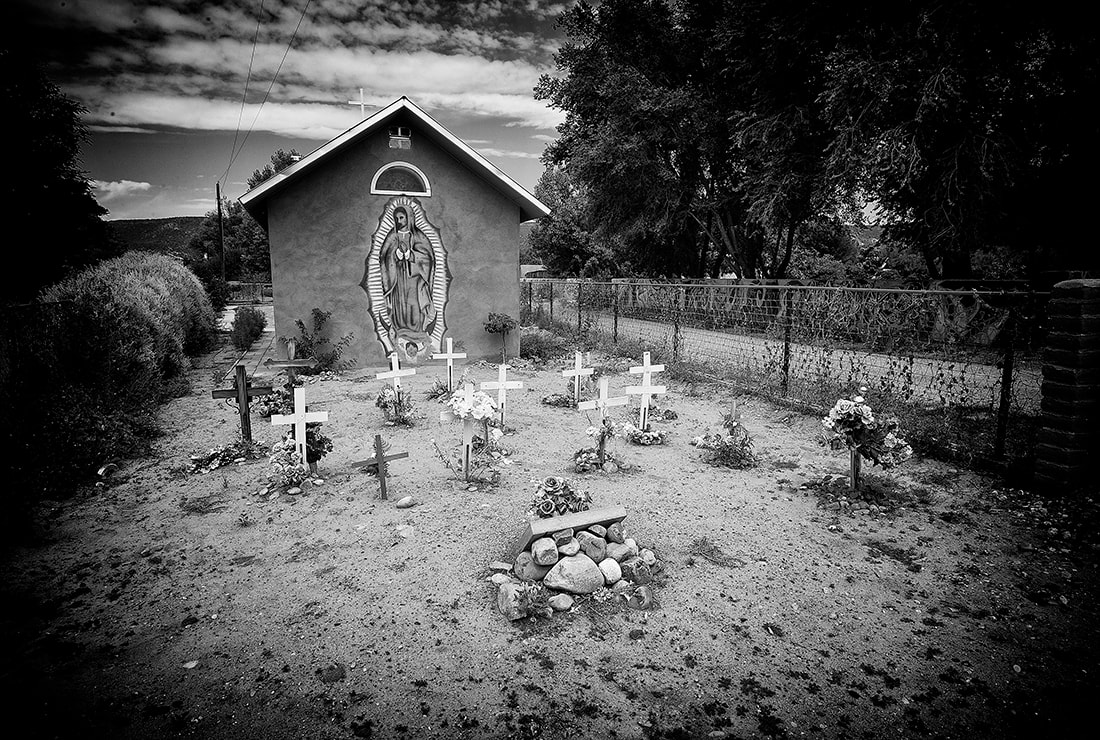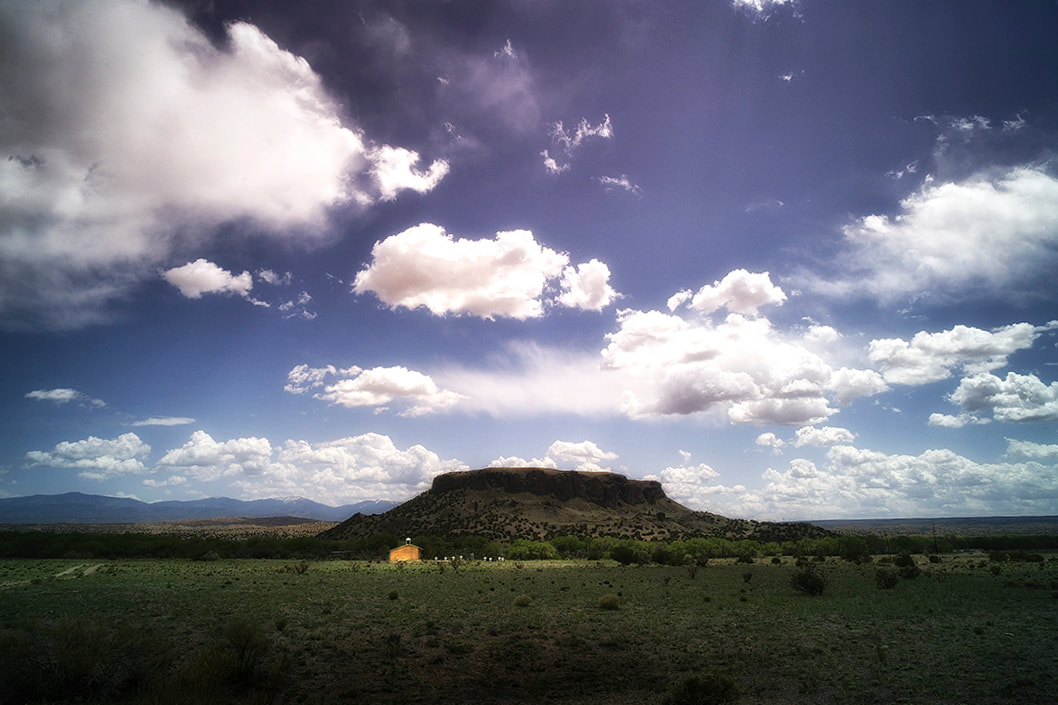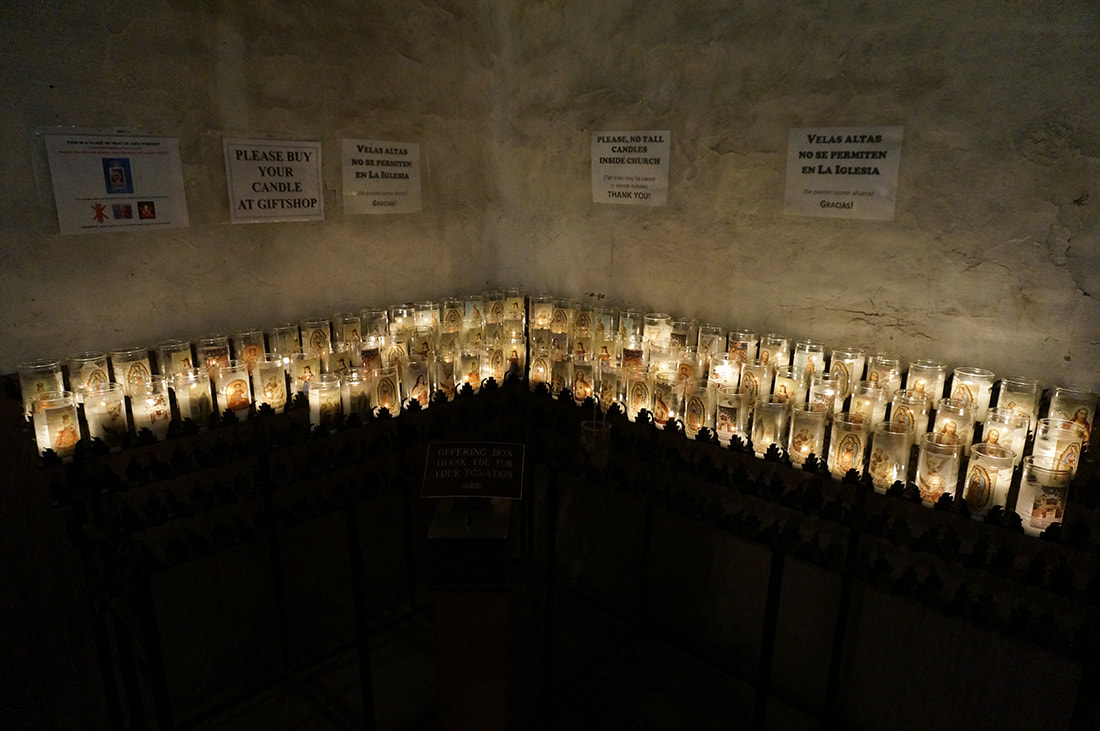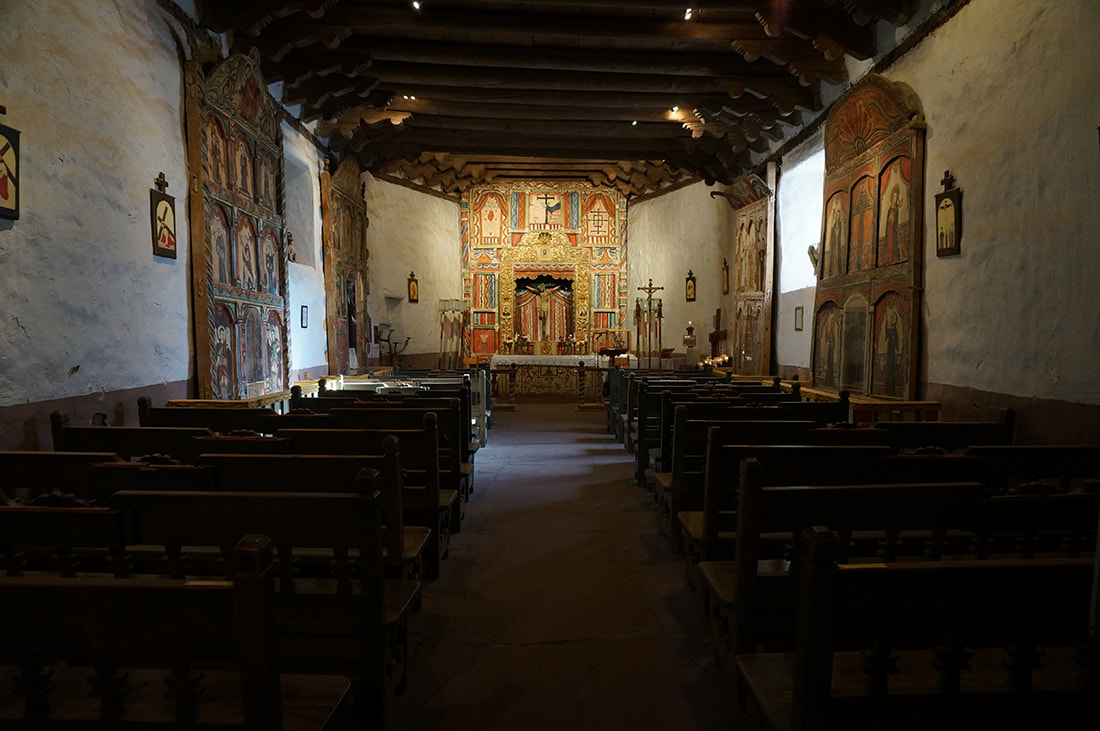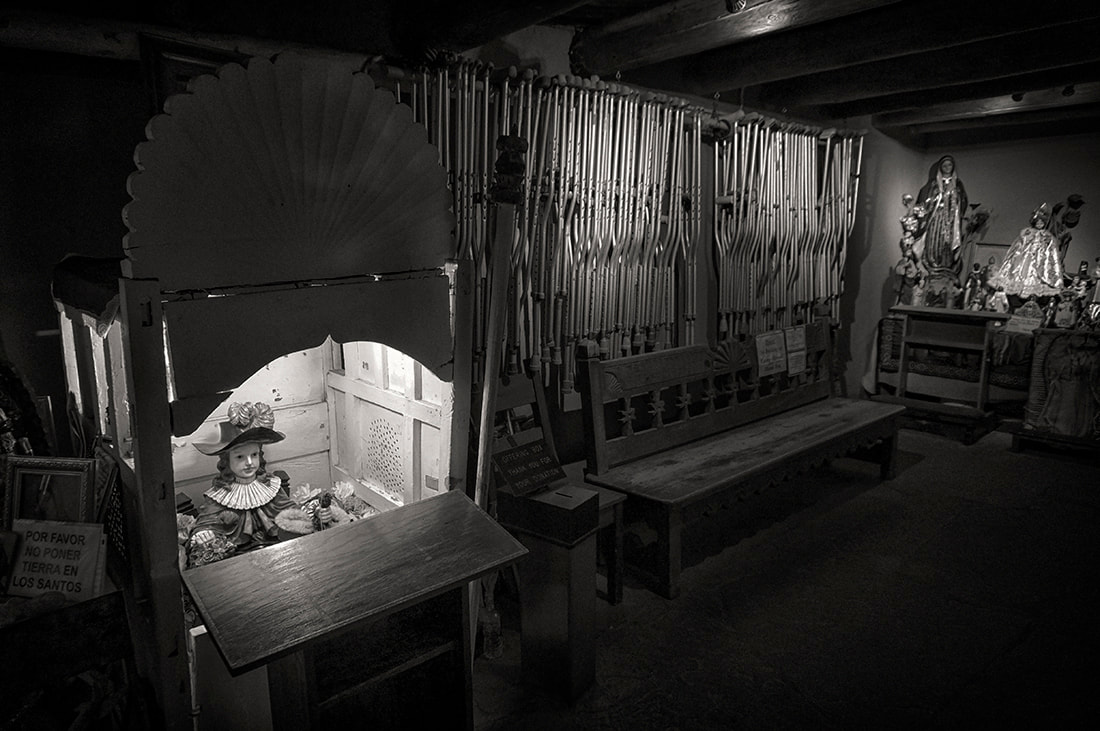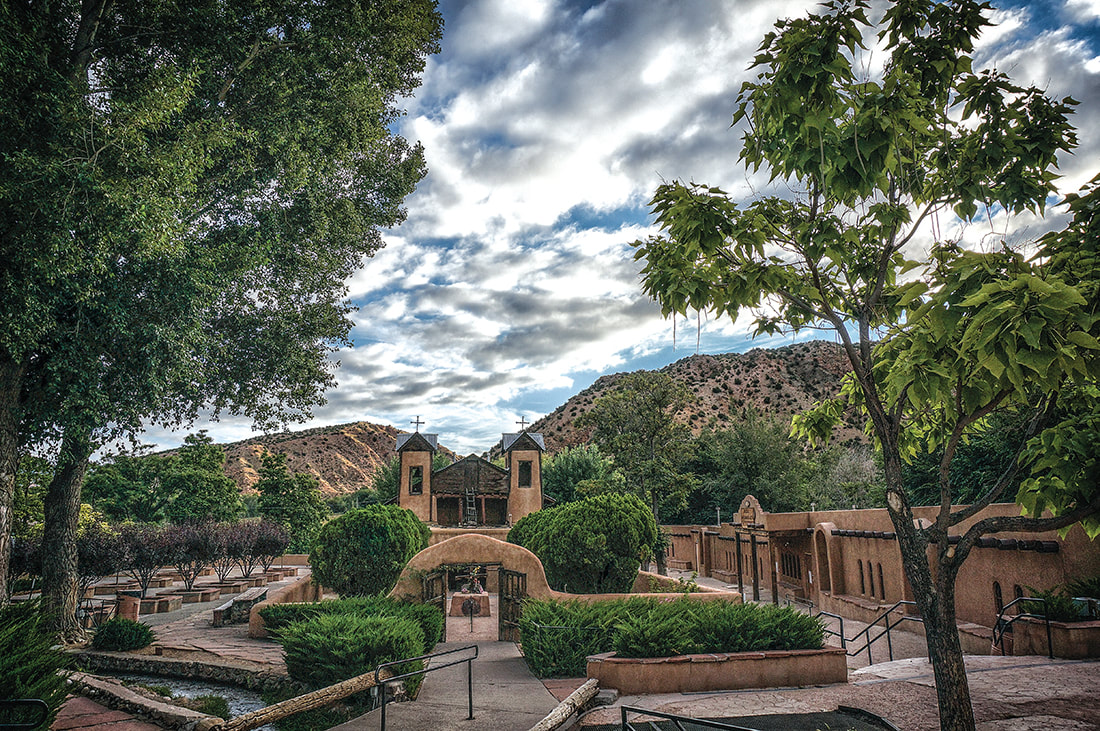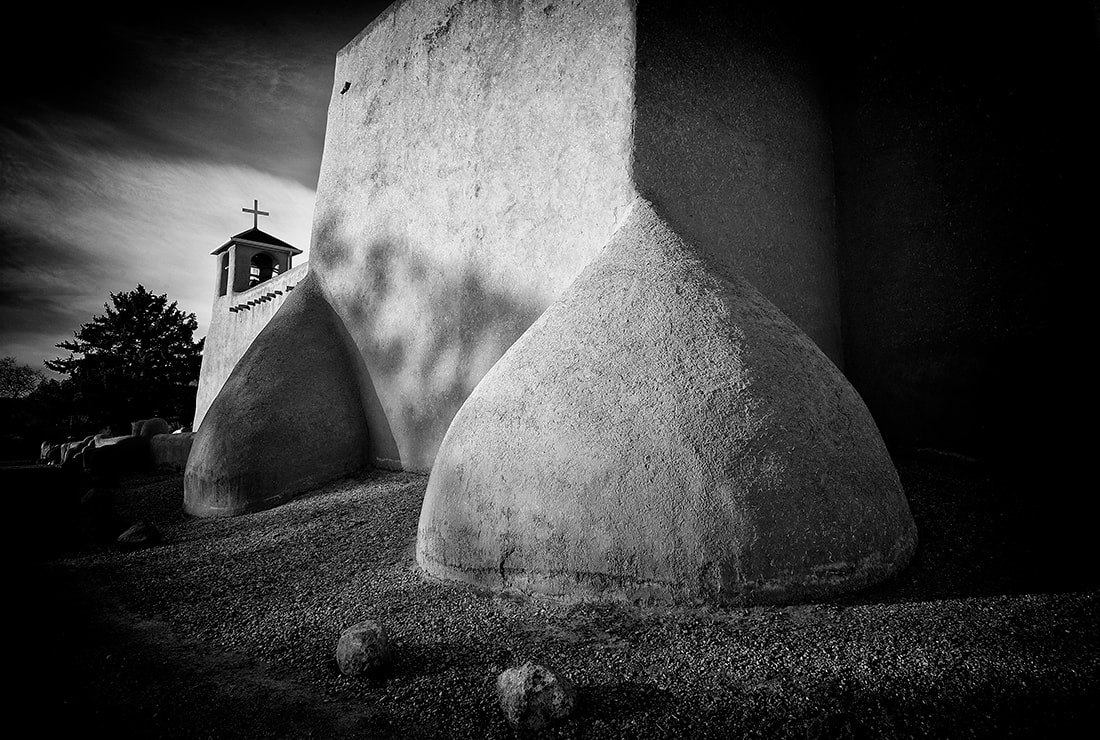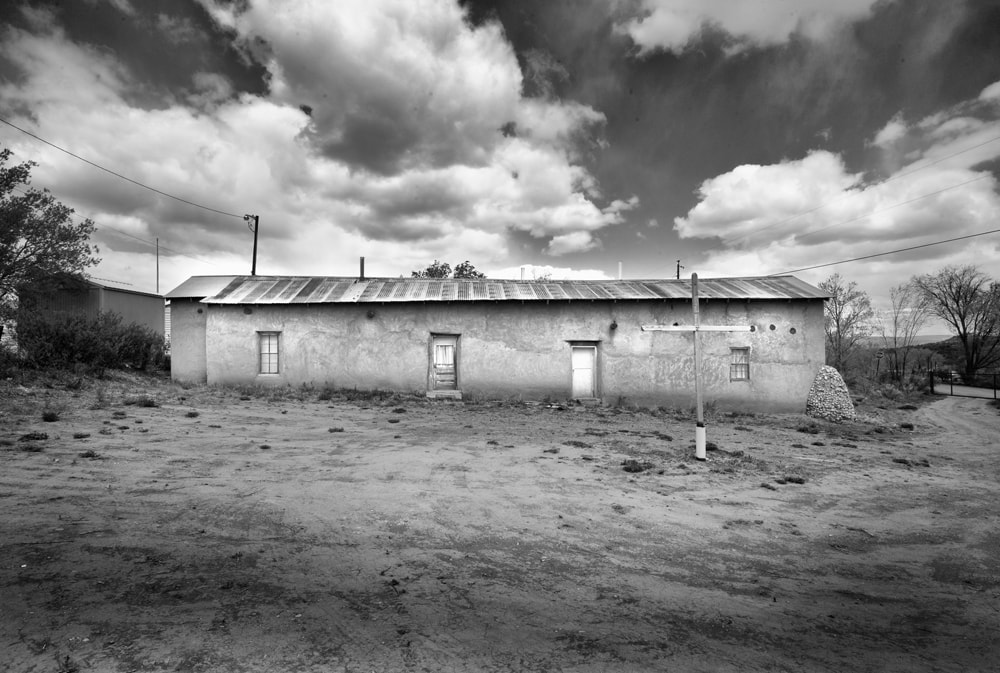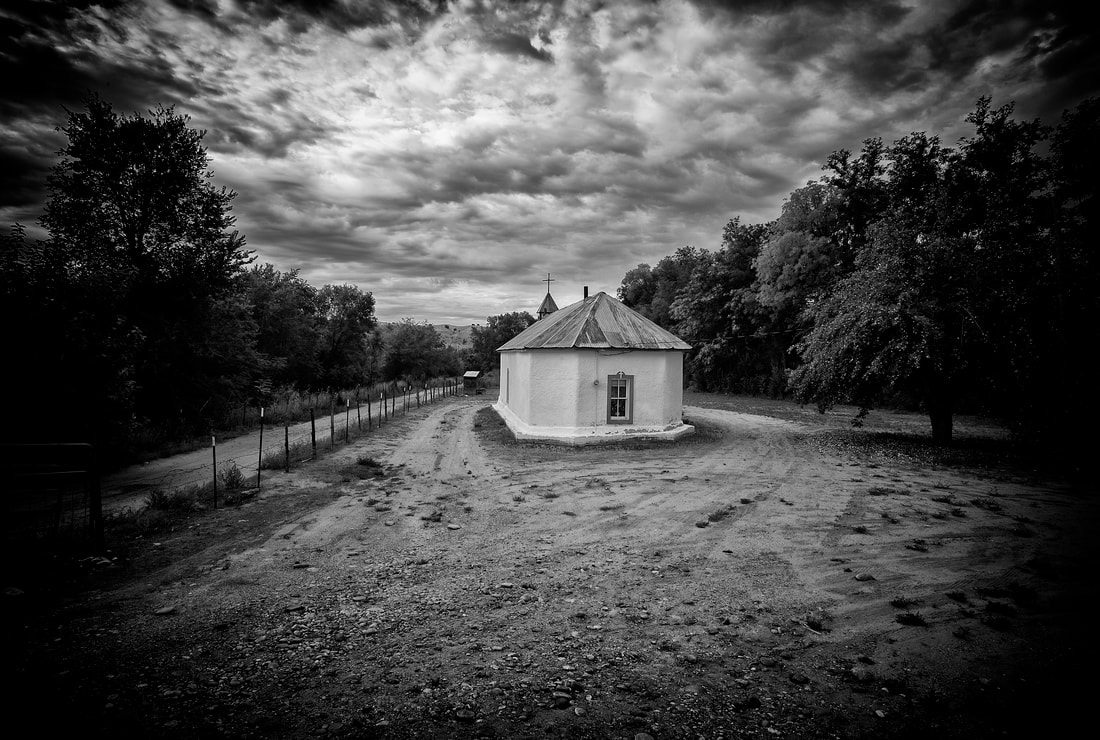Photojournalist Bob Eckert's Church Photographs
Youngsville, New Mexico, church with dramatic sky panorama.
Story and photos by Bob Eckert
In the fascinating book, “The Persistence of Memory: New Mexico’s Churches,” by Robert Brewer and Steve McDowell, they reference the term baraka. It’s used in the deserts of North Africa ‘where history is long and resources are short, the Moors use the term baraka to describe a special character in places or things. Gradually is came to be regarded as a trait (almost a personality) that accumulates very slowly, culminating eventually in a sort of spirituality that has been described as blessedness.’
I recently had a display of church photos I have taken over the years. I consider myself spiritual but not a church going person, but these structures have an allure to me that I have a hard time articulating.
For me, so many times I will find a charming chapel or morada in an out-of-the-way setting and the remoteness calls out to me. Other times there is the beauty of the light interacting with the stucco making for a very sensual surface. And there is, although I really can’t explain it, that ‘baraka’ aspect, where I can almost feel the history in the building. I can almost sense the activity of the participants inside, even if the church is no longer in use.
In Northern New Mexico art history we find numerous examples of the church as art subject: Ansel Adams photographed a large number of churches, chapels and moradas. Georgia O’Keeffe painted churches. Joe Waldrum both photographed and painted churches and chapels. The list goes on and on, indicating a more than passing interest in the church as art subject.
In the fascinating book, “The Persistence of Memory: New Mexico’s Churches,” by Robert Brewer and Steve McDowell, they reference the term baraka. It’s used in the deserts of North Africa ‘where history is long and resources are short, the Moors use the term baraka to describe a special character in places or things. Gradually is came to be regarded as a trait (almost a personality) that accumulates very slowly, culminating eventually in a sort of spirituality that has been described as blessedness.’
I recently had a display of church photos I have taken over the years. I consider myself spiritual but not a church going person, but these structures have an allure to me that I have a hard time articulating.
For me, so many times I will find a charming chapel or morada in an out-of-the-way setting and the remoteness calls out to me. Other times there is the beauty of the light interacting with the stucco making for a very sensual surface. And there is, although I really can’t explain it, that ‘baraka’ aspect, where I can almost feel the history in the building. I can almost sense the activity of the participants inside, even if the church is no longer in use.
In Northern New Mexico art history we find numerous examples of the church as art subject: Ansel Adams photographed a large number of churches, chapels and moradas. Georgia O’Keeffe painted churches. Joe Waldrum both photographed and painted churches and chapels. The list goes on and on, indicating a more than passing interest in the church as art subject.
Sangre De Cristo Chapel, Cuartales, New Mexico. Cuartales is between Española and Chimayó
Penitente morada, Abiquiú, New Mexico
Santa Rosa de Lima ruins, Abiquiú, New Mexico. Santa Rosa de Lima was an early 18th-century Spanish settlement in the Rio Chama valley, near the present-day town of Abiquiú in Rio Arriba County. By the 1730s Spanish settlers were moving into the Chama River valley, and by 1744 at least 20 families were living in the present-day Abiquiú area, where they founded the Plaza de Santa Rosa de Lima.[2] The church, on the plaza, was built around 1744,[2] and was in use until the 1930s. Repeated raids by Utes and Comanches caused the settlement to be abandoned in 1747. In 1750, the Spanish founded a new settlement at the present site of Abiquiú, about a mile from Santa Rosa de Lima.
A storm brews behind the Iglesia de San Pedro Church, Youngsville, New Mexico.
Laguna Pueblo, New Mexico
Sun rays and the Iglesia de San Pedro Church, Youngsville, New Mexico.
Interior of the Sangre De Cristo Chapel, Cuartales, New Mexico
Unidentified church between Grants, New Mexico and Albuquerque, New Mexico, photographed from a passing Amtrak train.
La Iglesia de Sagrado Corazón de Jesus, Pojoaque Pueblo, New Mexico
Santa Rosa de Lima ruins, Abiquiú, New Mexico.
Offering left at Santa Rosa de Lima ruins, Abiquiú, New Mexico.
Highway 84 passes by the Santa Rosa de Lima ruins, Abiquiú, New Mexico. Cerro Pedernal is seen in the rear.
Iglesia de San Pedro Church, Youngsville, New Mexico.
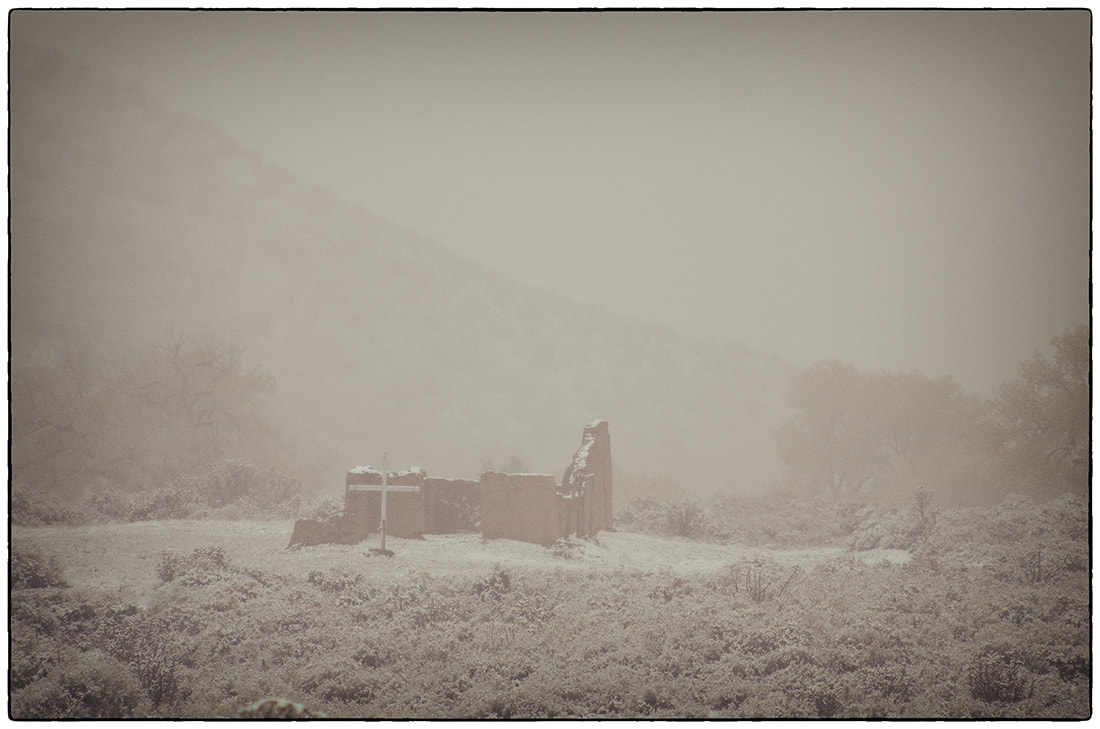
Heavy mist shrouds Santa Rosa de Lima ruins, Abiquiú, New Mexico, with snow covering the ground.
Iglesia de San Pedro Church, Youngsville, New Mexico.
Offerings left at Santa Rosa de Lima ruins, Abiquiú, New Mexico
Infrared photo of Santuario de Chimayó
San Jose de Chama church and burial ground, Hernandez, New Mexico. This is the church made famous by Ansel Adams with his "Moorise…" photo.
San Francisco de Asis Mission Church is a historic and architecturally significant church on the main plaza of Ranchos de Taos, New Mexico. Built between 1772 and 1816 when New Mexico was part of the Vice-Royalty of New Spain, it is one of the finest extant examples of a Spanish Colonial New Mexico mission church, and is a popular subject for photographers. It was designated a National Historic Landmark in 1970.
Clair Villa's personal chapel.
La Capilla de la Familia Sagrada Chapel and cemetery at the base of Black Mesa on the San Ildefonso Pueblo.
Santuario de Chimayó interior.
Santuario de Chimayó interior.
Santuario de Chimayó interior room where offerings are stored.
Santuario de Chimayó
San Francisco de Asis Mission Church is a historic and architecturally significant church on the main plaza of Ranchos de Taos, New Mexico.
Penitente Morada, Coyote, New Mexico.
Sangre De Cristo Chapel, Cuartales, New Mexico. Cuartales is between Española and Chimayó
To contact Bob Eckert for assignments, consultations or workshops, please email [email protected]
or use the contact form on the About page
or use the contact form on the About page

